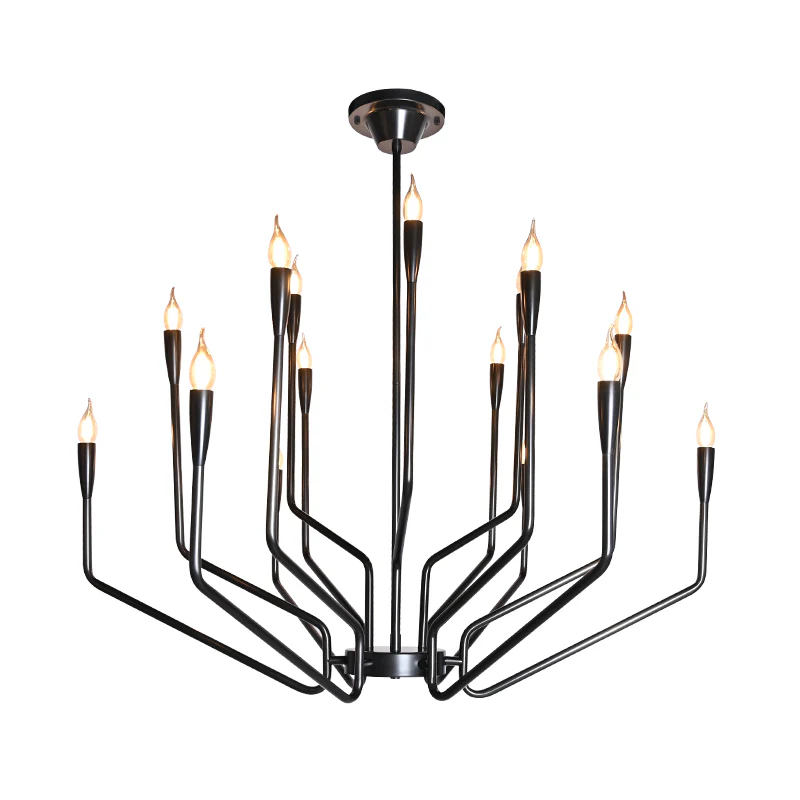Exploring Innovative Ceiling Light Technologies: A Bright Future for Illumination
Exploring Innovative Ceiling Light Technologies: A Bright Future for Illumination
In the ever-evolving world of interior design and architecture, innovative Ceiling Light technologies play a pivotal role in enhancing spaces, providing illumination, and offering energy efficiency. With the drive towards sustainability and smart solutions, a variety of advanced Ceiling Light technologies have surfaced. In this article, we delve into the latest trends, types of technologies, and their benefits to transform both residential and commercial environments.
Understanding Innovative Ceiling Light Technologies
The realm of Ceiling Lighting has burst with creativity and functionality. Innovative Ceiling Light technologies are not only about aesthetic appeal; they contribute significantly to energy conservation and smart home systems. Recent advancements incorporate various technologies including LED Lighting, smart lighting controls, and energy-efficient designs that contribute to sustainability.
1. LED Lighting: The Game Changer
One of the most significant breakthroughs in Ceiling Lighting is the adoption of LED (Light Emitting Diode) technology. LEDs are now widely used for their longevity, energy efficiency, and low heat emission compared to traditional incandescent bulbs.
| Benefits of LED Lighting |
| 1. Energy Efficiency: Consumes up to 80% less energy |
| 2. Longevity: Lifespan of up to 25,000 hours |
| 3. Low Heat Emission: Reduces cooling costs |
| 4. Versatility: Available in various designs and colors |
Especially in urban areas like New York, where energy consumption is a concern, the shift towards LED Ceiling Lights not only reduces electricity bills but also minimizes the carbon footprint.
2. Smart Lighting Technologies
As homes become smarter, so does our lighting. Smart Ceiling Lights can be controlled via smartphone apps or voice-activated devices like Amazon Alexa or Google Home. This technology allows users to adjust brightness, color, and even set schedules to optimize energy use.

Smart lighting systems have features such as:
- Automation: Lights can be scheduled to turn on or off based on user preferences.
- Customization: Users can choose specific lighting scenes for different activities.
- Energy Monitoring: Track energy consumption and savings.
3. Eco-Friendly Ceiling Light Solutions
With an increasing focus on sustainability, many manufacturers are designing Ceiling Lights using eco-friendly materials. These products often utilize recycled components and energy-efficient manufacturing processes.
Innovative Ceiling Light technologies that incorporate eco-friendliness are not just good for the environment, but they often meet consumer demand for green products. Additionally, certain countries have established regulations promoting energy efficiency, which further drives the innovation in this sector.
Types of Innovative Ceiling Light Designs
From recessed lighting to chandeliers, innovative designs abound in the market today. Here are a few of the most popular:
1. Recessed Lighting
Recessed lights are integrated into the ceiling itself, providing a sleek look. They are perfect for modern homes where space and Aesthetics are essential.
2. Pendant Lights
Pendant lights hang from the ceiling and can serve as statement pieces in a room. They are versatile and available in various styles, making them suitable for kitchens, dining areas, and living rooms.
3. Flush Mount Lights
Flush mount Ceiling Lights sit directly against the ceiling, making them ideal for rooms with lower ceilings. They come in a variety of styles to fit any decor.
Comparing Innovative Ceiling Lighting Technologies
| Technology | Pros | Cons |
| LED | Long-lasting, energy-efficient, low heat | Higher upfront cost |
| Smart Lighting | Customization, automation, energy tracking | Complex setup for some users |
| Eco-Friendly | Promotes sustainability, attractive to eco-conscious consumers | Limited availability |
The Future of Ceiling Lighting Technology
As we advance, innovative Ceiling Light technologies will continue to evolve, with trends such as smart home integration, enhanced energy efficiency, and aesthetic versatility gaining traction. Innovations like tunable white lighting, which allows users to adjust the color temperature throughout the day, will make their way into mainstream use to mimic natural daylight.
Furthermore, advancements in sensor technologies will likely contribute to the energy savings and functionality of Ceiling Lights by ensuring lights only operate when necessary. We may also see a surge in usage of materials that not only serve functional purposes but also add to the decor.
Conclusion: Embracing Innovation in Ceiling Lighting
The world of innovative Ceiling Light technologies is bright with potential. From LEDs and smart systems to eco-friendly designs, homeowners and developers alike can transform their spaces into energy-efficient and aesthetically pleasing environments. As we progress, staying informed about these technologies will assist in making better choices for both our wallets and the planet.
In summary, when considering the incorporation of new Ceiling Light technologies, it is crucial to consider factors such as energy efficiency, design compatibility, and the functionalities that enhance user experience. By embracing these innovations, both residential and commercial spaces can achieve optimal lighting solutions that are sustainable and stylish.
As technology continues to evolve, ongoing research and development in innovative Ceiling Light technologies are critical. It is even more important for consumers to stay updated on market trends and advancements, ensuring that their investments yield both functionality and long-term savings.
